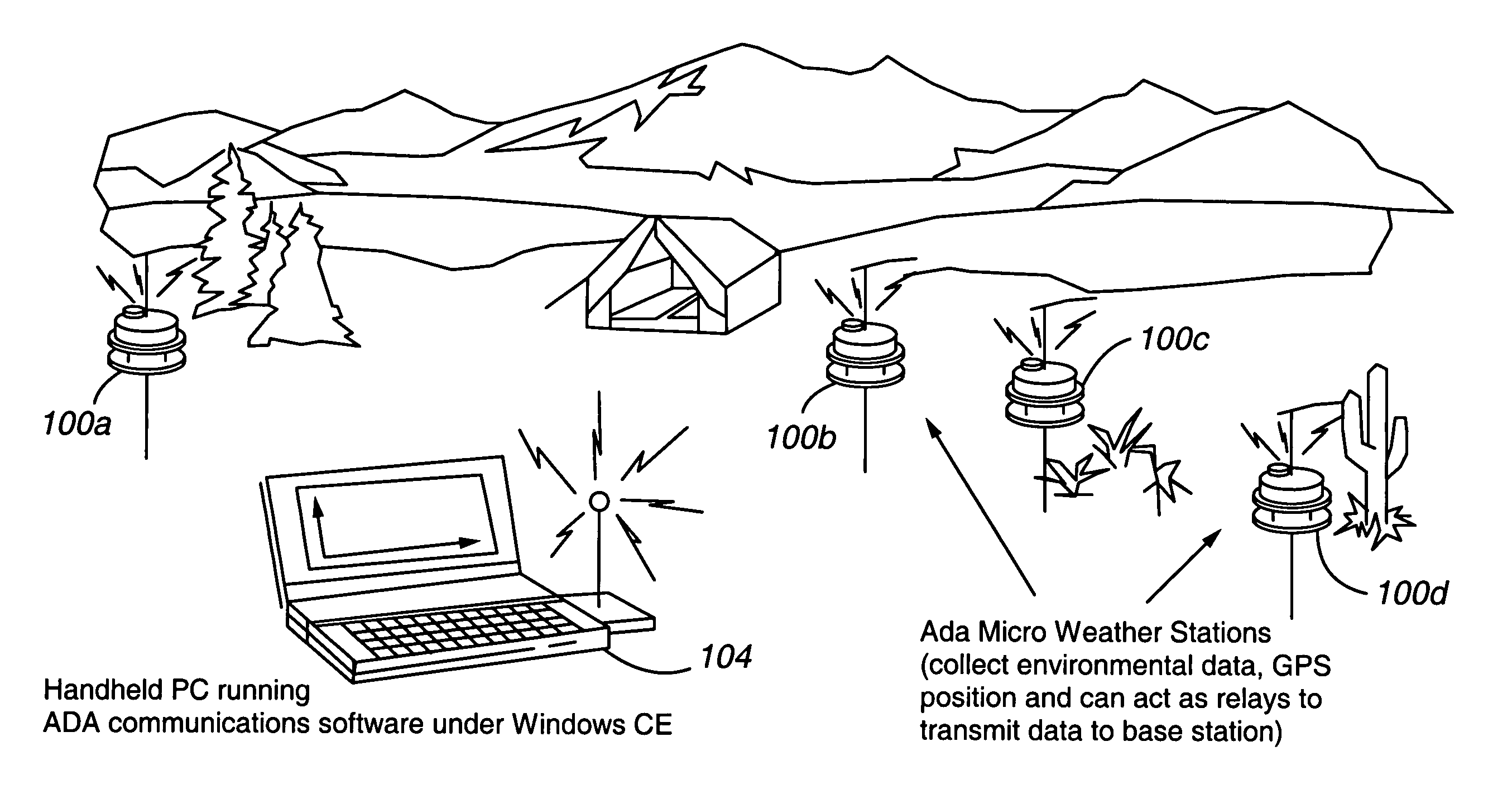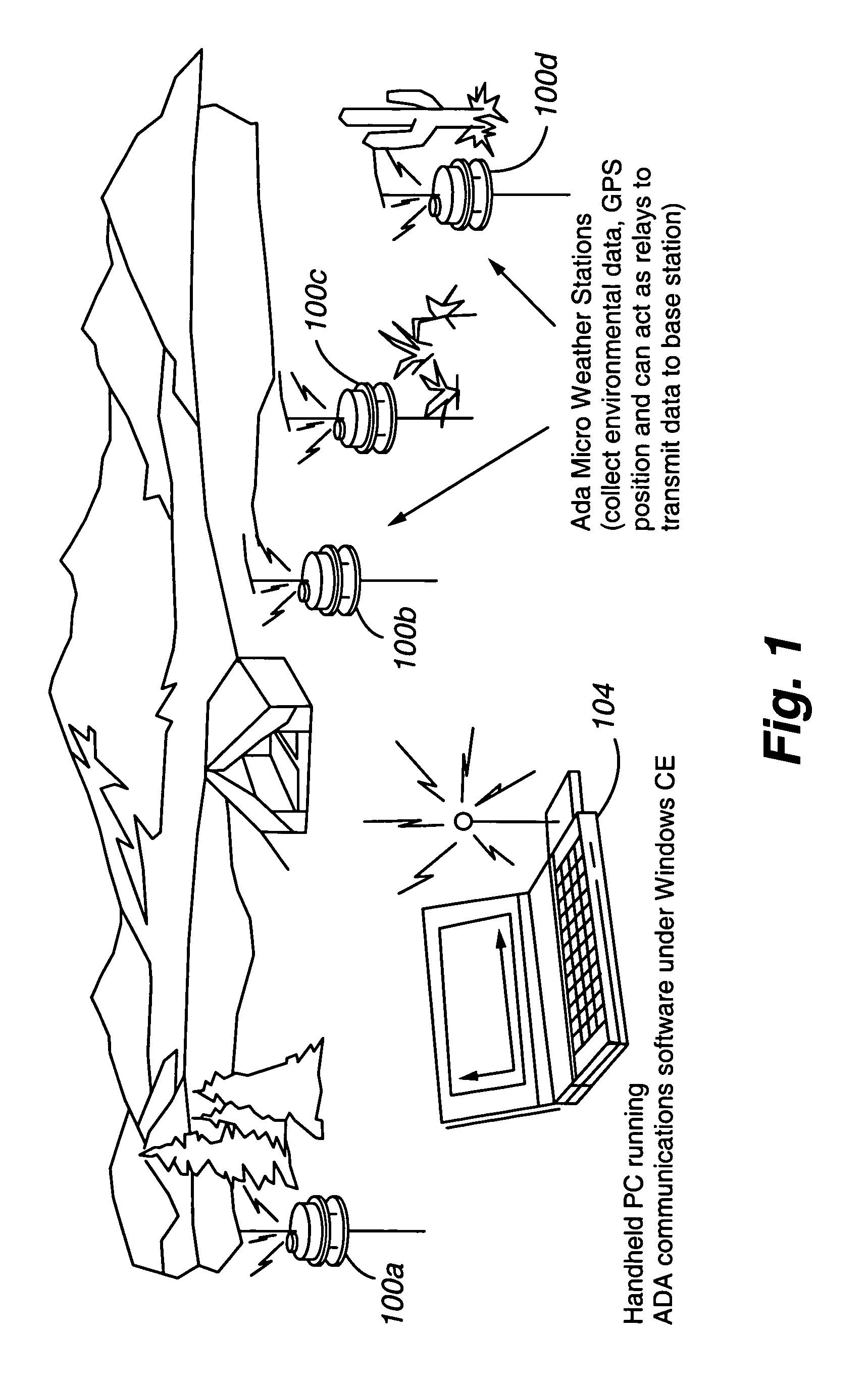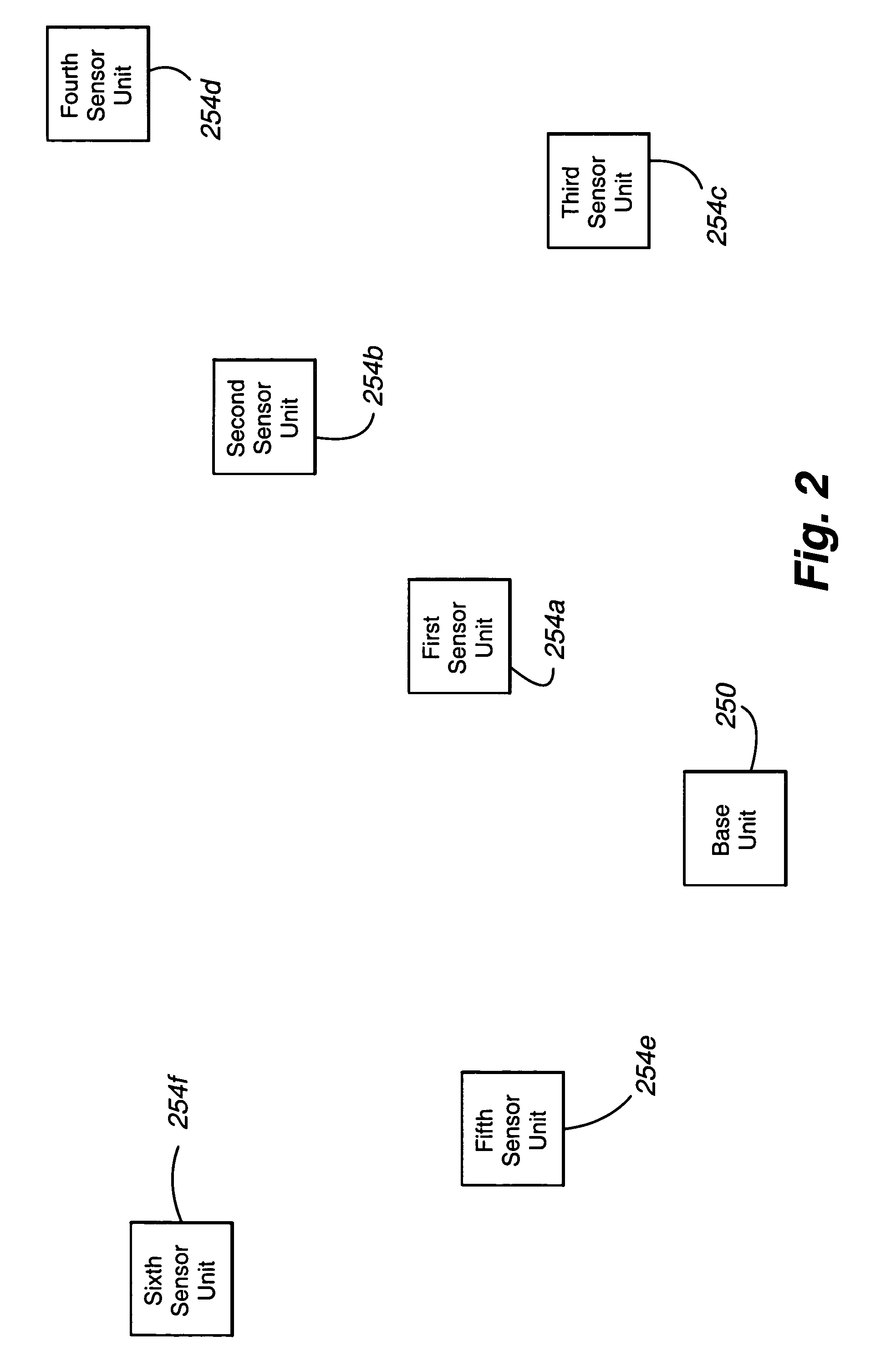[0009](b) a base unit in communication with the sensor units and configured to operate in a
network discovery mode (in which
network topology information is collected) and a data
polling mode (in which sensed information is collected from selected sensor units). The base unit and sensor units are spatially dispersed in different locations. Each of the sensor units is at least partially deactivated or in
sleep mode until (i) a
signal is received by the sensor unit from the base unit and / or the arrival of a scheduled time (which is received from the base unit) to perform a specified activity. As used herein, “sleep” mode means a self-deactivation of a sensor or
control unit until a predetermined time or
receipt of a predetermined
signal and / or a reduction in electrical activity or circuit function below a selected threshold (which typically is a cumulative current drawn from the available (e.g.,
on board) power source of no more than about 5% of that drawn during the “wake” mode). More typically, the cumulative current is no more than about 1 mA in any measured period. “Wake” mode, in contrast, means an operational state when the sensor or
control unit is activated, such as upon self-activation of the sensor or
control unit at a predetermined time or upon
receipt of a predetermined
signal. Because the sensor units are activated on an “as needed” basis, the operational life of the stored primary power supply of each sensor unit is substantially lengthened.
[0031]The anemometer includes a controller operable (i) during a first time interval, to transmit a first measurement (e.g., ultrasonic) signal from the first
transducer to the second
transducer; (ii) during a subsequent second time interval, to transmit a second measurement signal from the second
transducer to the first transducer; (iii) during a subsequent third time interval, to transmit a third measurement signal from the third transducer to the fourth transducer; and (iv) during a subsequent fourth time interval, to transmit a fourth measurement signal from the fourth transducer to the third transducer. To provide inexpensive and sensitive circuitry, the first, second, third, and fourth transducers are multiplexed together to use a common receive circuit, though the transducers have separate transmit circuits.
[0036](d) a second conduit in communication with the outlet. Adjacent ends of the first and second conduits are spaced from one another. To provide accurate and repeatable droplet counts, the adjacent ends of the first and second conduits are angled relative to a selected horizontal plane and / or the second conduit comprises a longitudinal slot extending downwardly from the end of the second conduit.
[0037]The various embodiments can have advantages relative to existing systems. First, the sensor units can be mounted permanently at key locations to collect real-
time information for use in atmospheric / plume models to establish atmospheric baseline dispersion patterns. Second, the sensor units can incorporate a sensor suite capable of detecting pre-event indicators (such as elevated
radiation levels) with the goal of prevention of a release. Third, the sensor units can be rapidly deployable, either manually or remotely, to augment an existing SAMS
network on a much finer grid in the case of an event or release. Fourth, the total cost of a SAMS using the sensor units can be relatively low, thereby enabling federal, state, and local authorities and other entities with limited budgets to implement a SAMS as part of an
emergency response plan. The sensor networks can be extremely versatile and expandable with the end-user being able to mix and match sensors at each installation. This versatility permits a range of scenarios to be accommodated. Redundant communication options along with a self-configuring and self-healing network are important because a terrorist
attack may well include attempts to disrupt communications and power in the target location.
 Login to View More
Login to View More  Login to View More
Login to View More 


